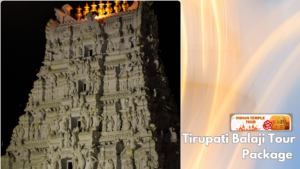A Complete Guide to Trekking in Nepal: Tips and Tricks

Trekking in Nepal is a dream comes true for many adventure enthusiasts. With its stunning landscapes, majestic mountains, and rich cultural heritage, Nepal offers a plethora of trekking opportunities for all levels of experience. Here is a complete guide to trekking in Nepal, including tips and tricks to make your trekking adventure a memorable one: Here’s a complete guide to trekking in Nepal, along with tips and tricks, brought to you by an Indian temple tour perspective:
- Choose the Right Trek: Nepal offers a wide range of treks, from short and easy ones to challenging high-altitude treks. Consider factors such as your fitness level, experience, time availability, and personal preferences when selecting a trek. Popular options include the Everest Base Camp Trek, Annapurna Circuit Trek, Langtang Valley Trek, and Manaslu Circuit Trek.
- Plan Your Trekking Season: The best time to go trekking in Nepal is during the pre-monsoon (spring) and post-monsoon (autumn) seasons. Spring (March to May) offers pleasant weather, blooming rhododendrons, and clear mountain views. Autumn (September to November) provides stable weather conditions and excellent visibility. Avoid trekking during the monsoon season (June to August) due to heavy rainfall and leech-infested trails.
- Obtain Necessary Permits: Most trekking areas in Nepal require permits. The two main permits are the TIMS (Trekkers’ Information Management System) card and the Annapurna Conservation Area Permit (ACAP) or Sagarmatha National Park Entry Permit (for Everest region treks). Obtain these permits in Kathmandu or Pokhara before starting your trek.
- Pack Wisely: Pack lightweight and essential items for your trek. Include warm clothing layers, a waterproof and windproof jacket, comfortable trekking shoes, a good quality backpack, a sleeping bag, a trekking pole, a water bottle, a hat, sunglasses, sunscreen, a first aid kit, and toiletries. It’s also essential to pack some snacks, a headlamp, extra batteries, and a camera to capture the breathtaking landscapes.
- Prepare Physically: Trekking in Nepal can be physically demanding, especially at higher altitudes. Start preparing your fitness level well in advance by engaging in regular exercise, cardio workouts, and hiking. Building strength and endurance will help you acclimatize better and enjoy your trekking experience.
- Stay Hydrated and Eat Well: Proper hydration is crucial during treks to prevent altitude sickness and maintain energy levels. Carry a water bottle and drink plenty of water throughout the day. Purify water using water purification tablets or a filtration system. Also, fuel your body with nutritious meals and snacks, including carbohydrates, proteins, and healthy fats, to sustain energy levels during long trekking days.
- Acclimatize Properly: Altitude sickness is a potential risk when trekking in Nepal’s higher regions. Acclimatization is vital to allow your body to adjust to higher altitudes gradually. Ascend slowly, take rest days, and listen to your body’s signals. If experiencing symptoms like headaches, dizziness, or nausea, descend to a lower altitude immediately and seek medical assistance if needed.
- Trek with a Guide or Porter: Consider hiring a local guide or porter to enhance your trekking experience. A guide can provide valuable insights into the local culture, navigate the trails, and ensure your safety. A porter can help carry your heavy backpack, allowing you to trek more comfortably and enjoy the journey.
- Respect Local Culture and Environment: Nepal is a culturally diverse country with deeply rooted traditions. Respect the local customs, traditions, and religious sites. Dress modestly, be mindful of local norms, and ask for permission before photographing people. Additionally, practice responsible trekking by disposing of waste properly, avoiding single-use plastics, and respecting the natural environment.
- Enjoy the Journey: Trekking in Nepal is not just about reaching the destination but also about embracing the journey. Take time to appreciate the stunning landscapes, interact with locals, and immerse yourself in the unique culture. Capture memories, make new friends, and embrace the challenges and rewards of trekking in the Himalayas.
Remember, trekking in Nepal is an adventure that requires proper preparation, respect for nature and culture, and a positive mindset. With the right planning and mindset, your trekking experience in Nepal will be truly unforgettable.







